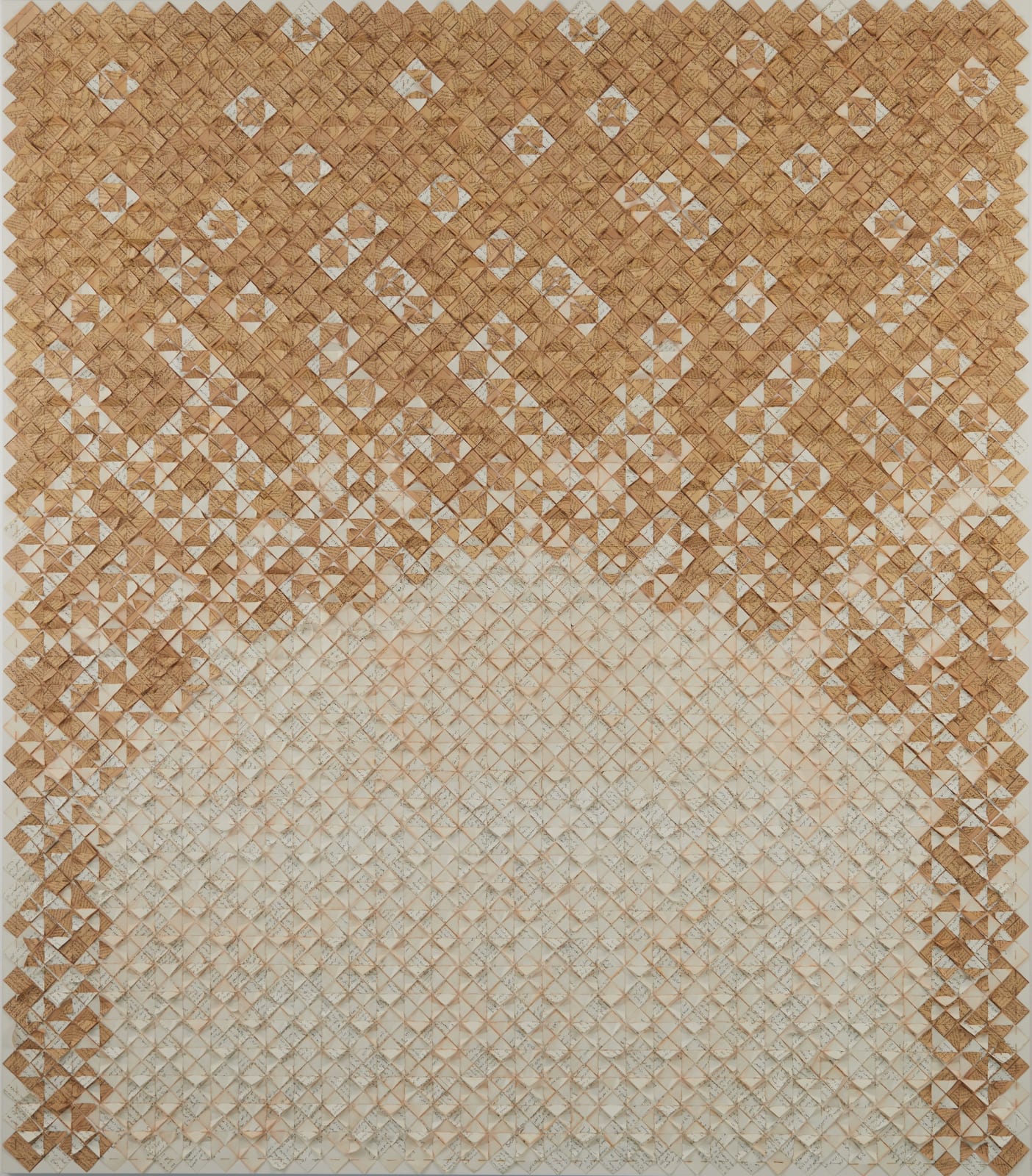
Catalina Swinburn b. 1979
59 x 51 1/8 x 4 in
Catalina Swinburn’s work engages with ancestral rituals, sacred
geographies, and memory through the act of weaving paper from vintage
documents, as to regenerate narratives and articulate both a sense of
urgency and a mode of resistance. Her recent body of work is rooted in
field research across Tunisia, focusing on the sacred topographies and
sonic trajectories of zawiyas, sanctuaries of Sufi devotion that persist
across the Maghreb. These spaces operate simultaneously as tombs,
shrines, and communal gathering points, where spiritual and performative
histories are preserved and re-enacted. The artist explores these spiritual
cartographies, often weaving together sacred architectures, sonic
textures, and performative rituals. Swinburn meditates on the interactive
triad of space, people, and ritual, which are the core elements that activate
the zawiya as a performative spiritual site.
MIZĀN takes as its conceptual and formal foundation the rhythmic
architecture of Sufi poetic and musical traditions. In Sufi musical and
poetic traditions, Mizān refers to the underlying rhythmic cycle that
structures a performance. It governs temporal balance, organizing vocal
and instrumental elements into measured repetition and intensification. In
poetry, it denotes metrical structure, the patterned syllabic flow that
shapes verse cadence. Beyond its technical meaning, mizān carries
metaphysical significance: a measure of spiritual balance, harmonic order,
and the architecture of ritual time. The visual composition registers these
temporal logics through shifts in interval, density, and directional flow,
rendering the layered sequences of the Hadra as woven diagrams of
rhythm and trajectories. The work reflects the ritual’s cyclical unfolding,
where repetition becomes a mode of attunement, grounding, and
elevation, enacting mizān as both a structural and spiritual axis.